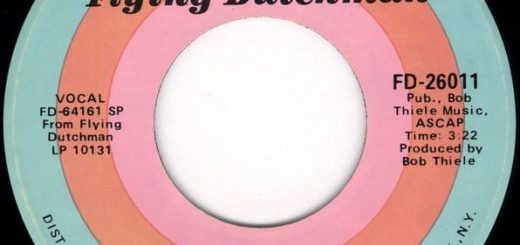Me and the Devil by Gil Scott-Heron Lyrics Meaning – Exploring the Darkness Within
Lyrics
When you knocked upon my door
Early this morning
When you knocked upon my door
And I say: hello satan
I believe, it’s time to go
Me and the devil
Walking side by side
Me and the devil
Walking side by side
And I’m gonna see my woman
’til I get satisfied
See see, you don’t see why
Like you’a dog me ’round
Say, I don’t see why
People dawging me around
It must be that old evil spirit
That spirit drop me down in your ground
You may bury my body
Down by the highway side
You may bury my body
Down by the highway side
So my old evil spirit
Can greyhound bus that ride
Gil Scott-Heron never shied away from the specters that haunt the American conscience. With his song ‘Me and the Devil’, he encapsulated a narrative of struggle and self-confrontation that surpasses the ordinary, delving deep into the psyche of battles both personal and universal. The track stands as a compelling weave of blues, soul, and narrative poetry, offering listeners a chilling yet profound engagement with the inner demons that Scott-Heron personifies so vividly.
The song, a reinterpretation of Robert Johnson’s legendary ‘Me and the Devil Blues’, serves not only as a testament to the lasting influence of the blues tradition but also as a lens through which to view Scott-Heron’s own life experiences. As we peel back the layers of the song’s enigmatic lyrics, we’re invited into a world where metaphors run deeper than the grooves of the record, and every line begs for a closer listen.
Straddling the Crossroads of Soul and Sorrow
Gil Scott-Heron’s ‘Me and the Devil’ bridges the rich history of blues with the raw immediacy of contemporary struggles. The song’s repeated phrasing and brooding melody echo the trappings of the blues genre, where storytelling is steeped in the human condition and adorned with the recurring motifs of hardship and adversity.
Much like the blues legends before him, Scott-Heron confronts his devils candidly, his voice carrying the weight of each word, resonating with the echoes of a shared cultural memory. This modern crossroads narrative weaves together the personal and the historical, suggesting that the ‘devil’ is as much within as it is an external force.
A Haunting Glimpse into Personal Struggle
Beyond the homage to blues tradition, ‘Me and the Devil’ can be understood as a raw portrayal of Scott-Heron’s own confrontations with addiction and societal pressures. The ‘early morning’ visit from Satan doesn’t just speak to folklore but can be interpreted as a metaphor for the artist’s own internal turmoil and the cyclical nature of his personal battles.
Through the refrain ‘I believe it’s time to go,’ we sense a resignation to the dance with one’s demons, hinting at a cycle of compulsion that interrupts the tranquil of daybreak—a troubling disruption to the supposed serenity of a new day.
The Symbolism of the Highway and the Greyhound Bus
The image of the body ‘buried by the highway side’ coupled with the ‘evil spirit’ catching a ‘greyhound bus that ride’ is drenched in symbolism. It’s as if Scott-Heron acknowledges the inevitability of movement in the afterlife, suggesting that the soul’s journey and struggle continue even after death.
In American culture, the Greyhound bus has come to represent the long, often lonesome journey, an apt metaphor for the wandering spirit Scott-Heron envisages—never resting, always in search of resolution.
Decoding the Hidden Meanings within the Lyrics
Throughout ‘Me and the Devil’, the nuanced layers of Scott-Heron’s writing suggest that the devil is not only an adversary but an integral part of the self. The repetition of ‘walking side by side’ hints at an acceptance, or perhaps, a sense of unity with this dark aspect of his identity.
Each verse confronts a different aspect of life’s struggles, from the alienation felt by the ‘dogging’ around by others to the final authoritative decision on where one’s body—and mythically, one’s spirit—shall rest. The layering of these complex themes invites listeners to consider the many forms that personal devils might take.
The Unforgettable Chorus That Echoes Long After the Song Ends
‘Me and the devil, walking side by side’—this haunting chorus serves as the song’s spiritual and lyrical core. The line resonates not just because of its immediate ties to the Robert Johnson classic from which it was derived but also because of its melancholic, universal relatability.
It’s a recognition of the companionship found in our darker moments and a somber affirmation that within each person lies a battle between light and darkness. Such memorable lines stand as testament to Scott-Heron’s poignant genius, encapsulating vast human experiences within a few choice words.








